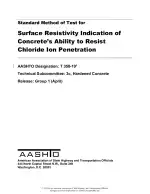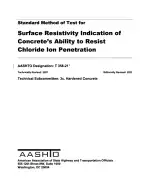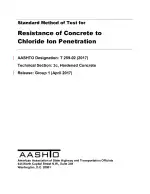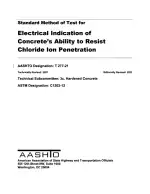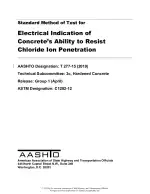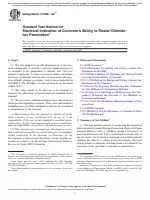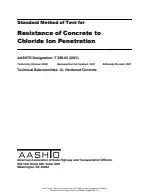AASHTO T 358-19 PDF Download
Standard EN SampleStandard Method of Test for Surface Resistivity: Indication of Concrete's Ability to Resist Chloride Ion Penetration
Also Known As:
AASHTO T 358-19 outlines a procedure for assessing the electrical resistivity of water-saturated concrete. The purpose of this test is to provide a quick indication of the concrete's resistance to the penetration of chloride ions, which can lead to corrosion of reinforcement and deterioration of the concrete.
This standard applies to different types of concrete for which correlations have been established between this test method and long-term chloride diffusion procedures, such as those specified in ASTM C1556. The test involves measuring the electrical resistivity of a water-saturated concrete specimen using the four-probe technique.
By determining the surface resistivity of concrete, this test provides a convenient and reliable way to assess its ability to resist chloride ion penetration. This information can be useful in evaluating the durability and long-term performance of concrete structures, especially those exposed to chloride-rich environments.
| Language(s) | English |
| File Size | 1.8 MB |

